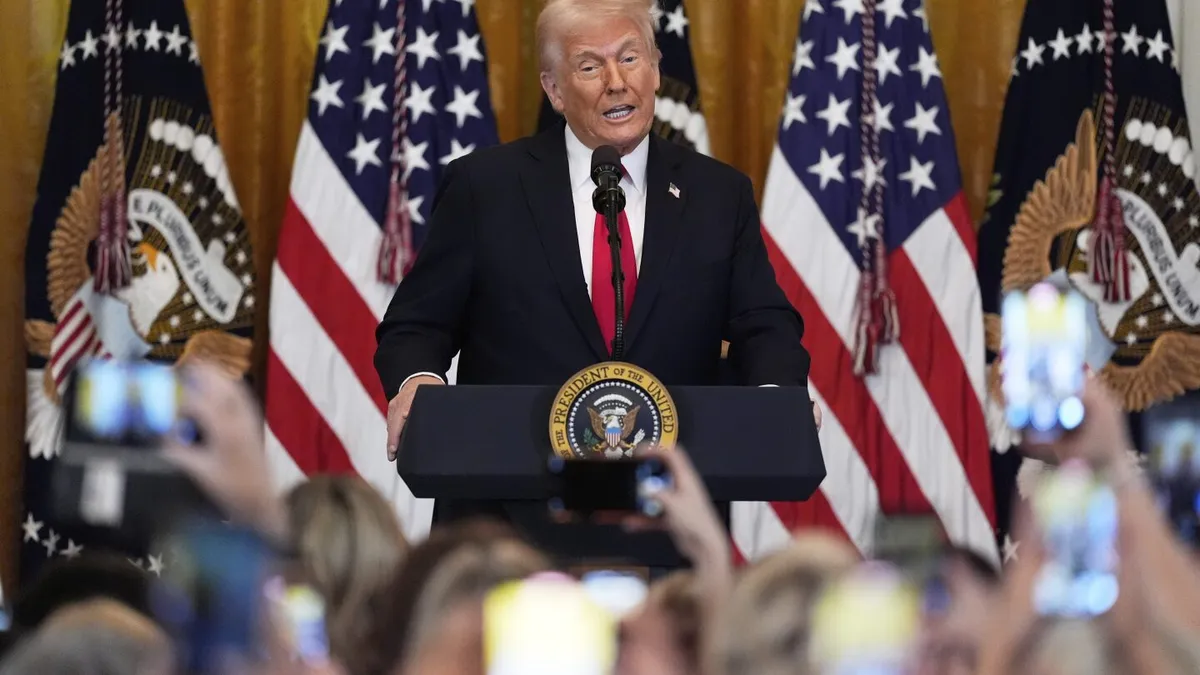
On Wednesday, President Donald Trump is poised to unveil a series of self-described “reciprocal” tariffs aimed at both allies and adversaries alike. This announcement follows weeks of heightened anticipation from the White House and public apprehension. The tariffs are intended to bolster U.S. manufacturing and penalize nations that Trump claims have engaged in years of unfair trade practices.
Despite the administration's confidence, many economists warn that these new tariffs could jeopardize the economy, potentially leading it into a downturn while damaging longstanding international alliances. “April 2, 2025, will go down as one of the most important days in modern American history,” stated White House Press Secretary Karoline Leavitt during a briefing on Tuesday, emphasizing that the tariffs will take effect immediately.
The tariffs that Trump plans to announce will follow recent measures, including a 25% tax on auto imports and additional levies against countries such as China, Canada, and Mexico. Furthermore, the administration has targeted imports of steel and aluminum, as well as oil from Venezuela, and is considering separate import taxes on essential items like pharmaceutical drugs, lumber, copper, and computer chips.
Warnings about a declining stock market and a downturn in consumer sentiment have not deterred the administration from its strategy. White House trade adviser Peter Navarro has suggested that the new tariffs could generate as much as $600 billion annually, marking the largest tax increase since World War II. However, importers are likely to pass some of these costs onto consumers, with Yale University's Budget Lab estimating that a 20% universal tariff could raise household expenses by $3,400 to $4,200.
The administration believes that these tariffs will invigorate domestic production and create new factory jobs, with Leavitt asserting that the President’s approach is sound. “They’re not going to be wrong,” she claimed, expressing confidence in Trump’s team of advisers who have been analyzing these issues for decades.
However, public and international concern regarding the tariffs has been palpable, as many perceive the import taxes as a threat to economic stability. Numerous analyses suggest that broad 20% tariffs could lead to higher prices and stagnation across various sectors, including clothing, oil, and groceries. The U.S. economic growth could decline by roughly one percentage point as a result of the tariffs, according to Budget Lab’s analysis.
Critics of the tariffs, including Senate Democratic leader Chuck Schumer, argue that these measures are a means for Trump to increase revenue to fund tax cuts that primarily benefit the wealthy. “Almost everything they do, including tariffs, seems aimed at getting those tax cuts for the wealthy,” Schumer stated on the Senate floor.
In anticipation of Trump’s announcement, longtime trading partners are preparing their own countermeasures. Notably, Canada has already responded to the 25% tariffs with its own set of measures, while the European Union has imposed taxes on €26 billion worth (approximately $28 billion) of U.S. goods, including bourbon. This has led Trump to threaten a staggering 200% tariff on European alcohol.
Many allies feel reluctantly drawn into a confrontation, as Trump has repeatedly claimed that both friends and foes have exploited the United States through various tariffs and trade barriers. European Commission President Ursula von der Leyen emphasized that, “Europe has not started this confrontation,” indicating a readiness to retaliate if necessary.
The lack of specific details surrounding Trump’s tariffs has cultivated uncertainty, not just within the U.S. economy but globally. This uncertainty has inhibited businesses from making plans, as noted by Ray Sparnaay, general manager of a Canadian tool and die company, who expressed concerns about the impact on their operations due to the unpredictability surrounding the tariffs.
As President Trump prepares to make this significant announcement, the implications of the new tariffs remain uncertain, with potential effects reverberating through the U.S. economy and beyond.